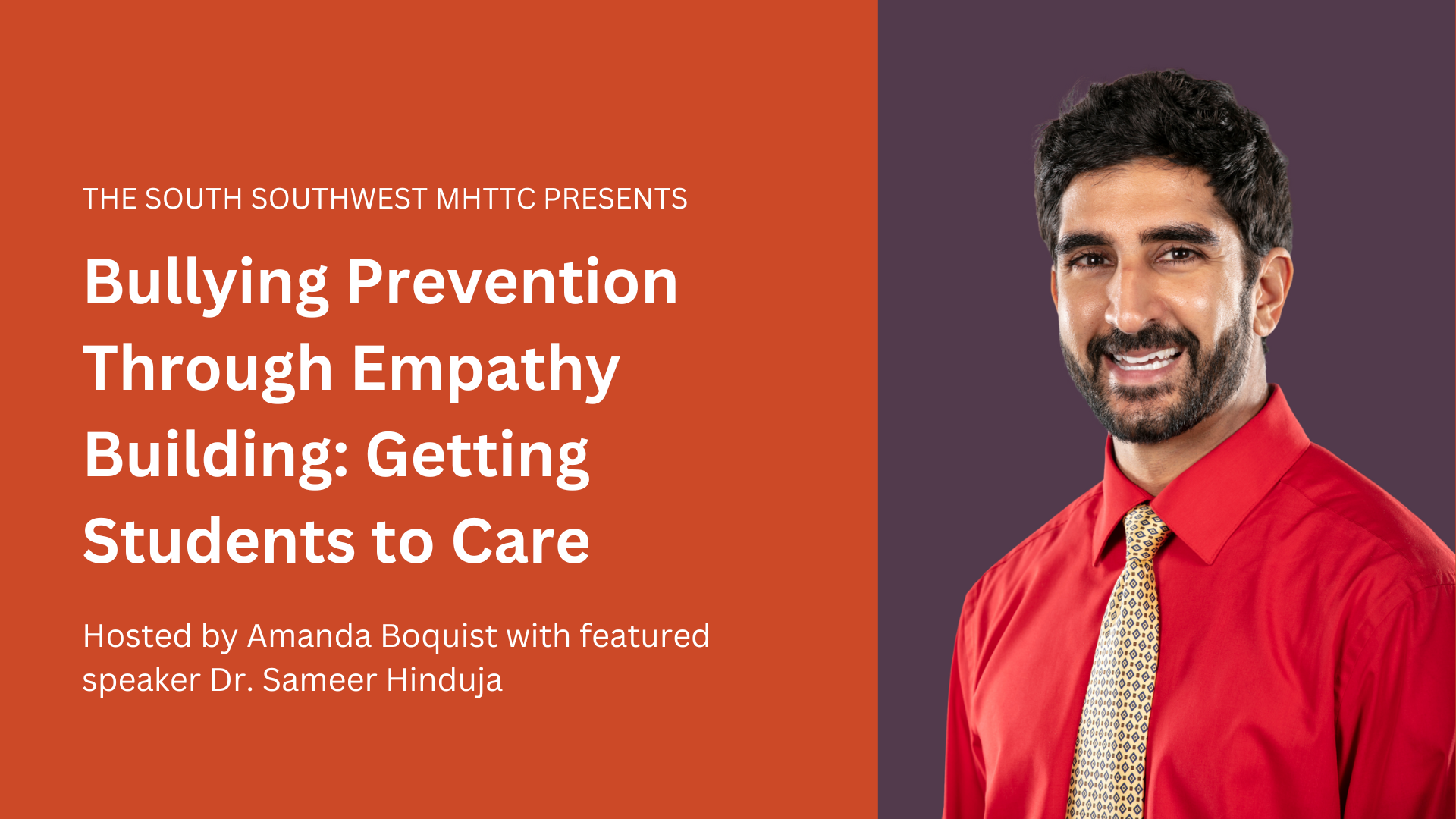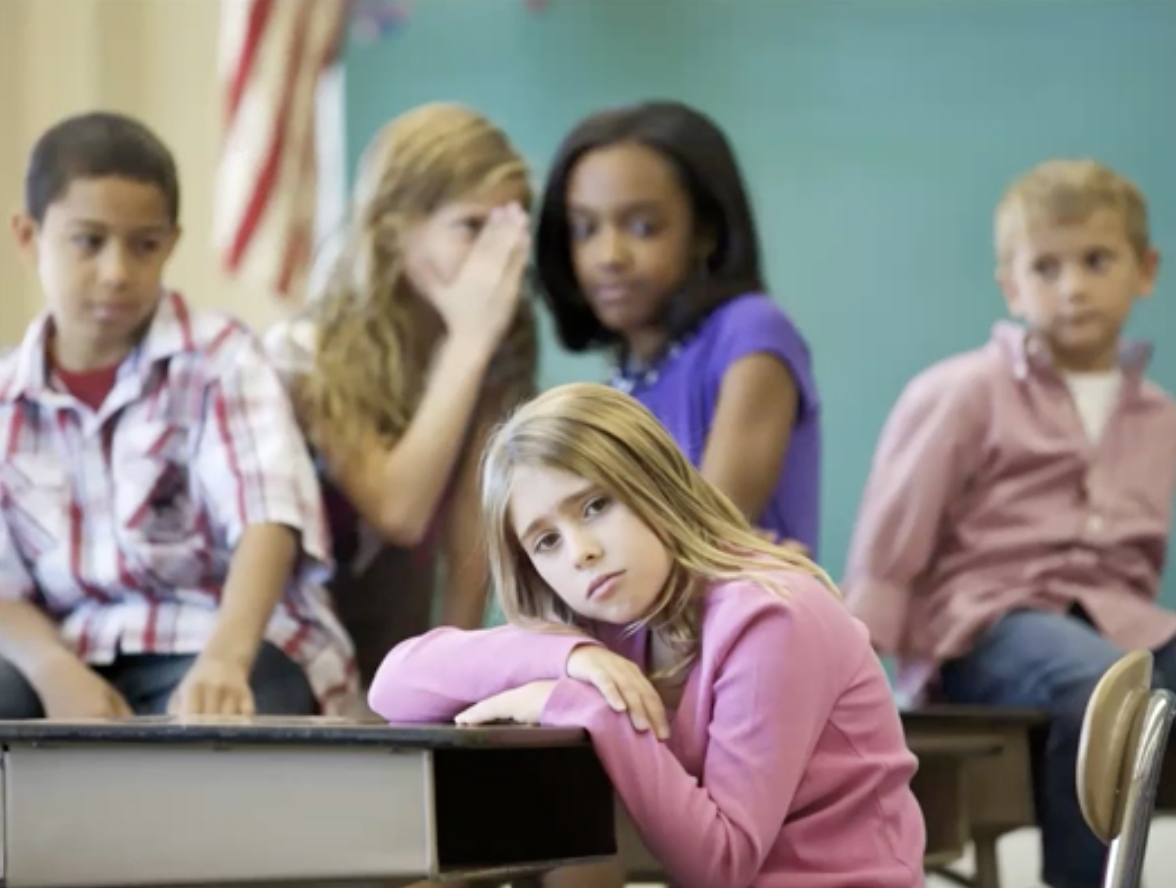Home > Cyberbullying in Schools: 7 Effective Prevention Strategies for Educators
By: Raven Garza (she/they)

Over half of youth ages 13-17 have been cyberbullied in their lifetime, and that number has steadily increased in recent years according to the Cyberbullying Research Center. How can educators make an impact and help prevent cyberbullying from happening?
Research suggests that building empathy can reduce in-person bullying and cyberbullying while also promoting tolerance, kindness, and peer respect in student interactions. While many teachers agree with this concept, they often lack a toolbox of plug-and-play activities to use in their schools.
In this post, we’ll share key insights from a recent South Southwest Mental Health Technology Transfer Center (MHTTC) session by Professor and Co-Director of the Cyberbullying Research Center Dr. Sameer Hinduja.
Dr. Hinduja provided several thought-starters and actionable strategies for educators to use with their students in his session titled, “Bullying Prevention Through Empathy Building: Getting Students to Care.” You can access the full webinar recording here as well as the presentation slides and educator handouts.
Here are a few highlights:

In this exercise, you’ll present a situation to your students where someone is being bullied by a group. You could share an image of this scenario, or you could address a real interaction that might’ve happened at your school.
Ask your students to reflect on the situation. You could ask questions like:
Download a picture of a young person in the same age group as your students looking sad or emotionally struggling (you can use free stock photos from sites like Pexels or Unsplash). Share this with your class and ask them to write a story about the sad person.
What’s their name? What’s their home life like? Do they have pets? What are their interests? Then, you’ll also ask students to write about the person’s physical and emotional needs.
Who’s responsible for meeting those needs? If they’re feeling stressed, what role do their parents/guardians play? If they were in your class, what would you be responsible for? Even if that responsibility is simply asking someone if they’re okay, it can make a huge difference.
The point of this exercise is to get kids to start thinking about other people and how their actions could impact their well-being.
This activity will sound familiar if you’ve ever watched this scene from the movie Freedom Writers. First, you’ll create a line down the middle of a room (this could be with tape, string, or another item).
Next, you’ll call out statements/descriptions that will potentially resonate with students. For example, you’d say “Step up to the line if you play a sport,” and students who play sports would move forward for a moment before stepping back again for the next statement.
You can start with lighthearted descriptions and progressively ask more serious ones such as, “Step forward if you’ve ever been judged or teased because of the color of your skin.” Also, remember to check in with your students before practicing this activity to make sure they feel safe with one another. Remind everyone that if they don’t feel comfortable participating at any point, that’s completely okay.
This exercise is meant to help youth realize that they have a lot more in common with their classmates than they might expect.
Class hour is a time for you and your students to step away from classwork and talk about anything— life, how they’re feeling that day, any issues they’re dealing with, etc. This is a regular practice in the Netherlands, but you don't need to dedicate a full hour if you don’t have time. We suggest setting aside at least 15 minutes.
One student is usually in charge of bringing a treat to share with others. The point of this activity is to help students be more vulnerable with each other and provide a safe space for them to share their thoughts.
Create a log for students to keep track of their purposeful acts of kindness throughout the day, week, month, or longer. You could invite another classroom to participate and add an incentive for the class that collects the most acts of kindness. Or, you could split your class into groups and compete with each other.
Although your students might only get excited by the reward at first, this could get the ball rolling and help them realize how great it feels to lead their lives with kindness.
Share Chimamanda Ngozi Adichie’s TedTalk with your class, or briefly summarize the takeaways from her speech. In the video, she tells the story of how she found her authentic cultural voice— and warns that if we hear only a single story about another person or country, we risk creating misunderstandings.
For example, someone might judge you based solely on your ethnicity. They may use stereotypes to guide their feelings about you, which reduces your entire life into an inaccurate set of ideas.
Have students write one to two pages about a time when they adopted a single story about someone and whether they’ve ever had stereotypes made about their own identity.
Ask your students to write a letter or a thank you card to someone at school who has made a difference in their life. They could be a teacher, coach, lunchroom staff, custodial employee, or anyone else who impacted them.
You can encourage students to try different types of writing such as a poem or song. This exercise helps them pause for a moment, put themselves in someone else’s shoes, and practice gratitude.
Our team at the South Southwest MHTTC collaborates with industry experts year-round on insightful webinars, trainings, presentations, and more.
If you’d like to learn more about Dr. Hinduja’s work, he’ll be hosting another session titled “Cyberbullying: Actionable Strategies for Administrators” on April 25. Visit the event page to learn more and register!